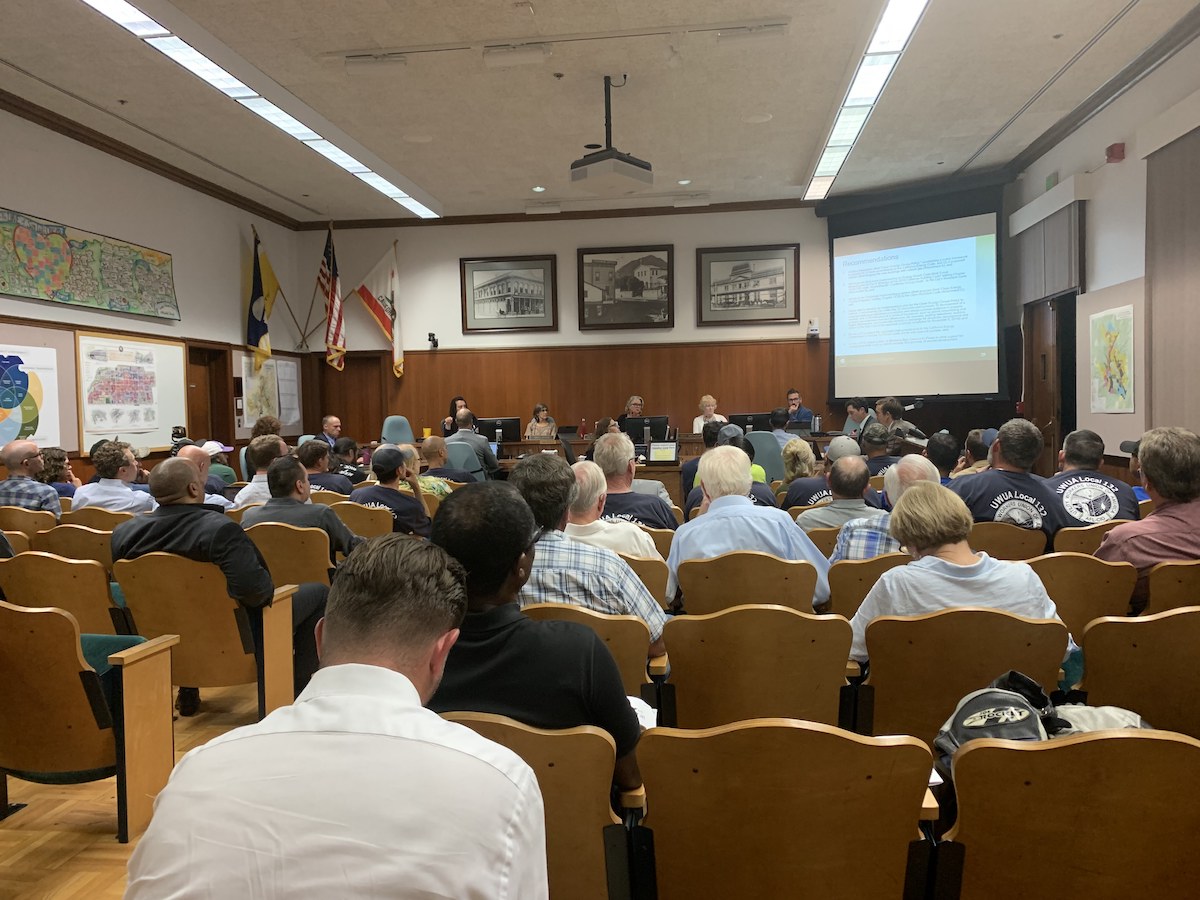San Luis Obispo is closing out the summer by turning down the dial on gas. Yesterday, San Luis Obispo became one of the first cities in California to adopt an ordinance to strongly support all-electric new buildings. The city council voted 4-1 for the Clean Energy Choice Program, which encourages all-electric construction for new residential and commercial buildings. San Luis Obispo’s new law will deter the expansion of the gas industry and will provide important benefits to families, students and businesses in SLO, including lower cost new construction, lower energy bills, cleaner air, safer homes, and a more climate resilient community.
What the Clean Energy Choice Program does
The Clean Energy Choice Program encourages all-electric new construction. The code does not mandate all-electric or ban gas, but rather makes it easier and more cost-effective for builders to go all-electric. For all-electric new designs, builders will have to comply with the minimum efficiency requirements in the statewide building code (Title 24), and do nothing additional. However, for new buildings that use both gas and electricity, higher efficiency will be required, as well as “electrification-readiness.” This means, these buildings must have the electric infrastructure in place for the home to go all-electric in the future. In addition, to account for the higher emissions from gas, any new building with gas will be required to offset gas use by performing retrofits on existing buildings or by paying an in-lieu fee that will be used for the same purpose.
The new local building code will go to the California Energy Commission for approval, and following that will go into effect January 1, 2020. Although this new building code does not require all-electric new construction, it sends the signal loud and clear that all-electric is cheaper, easier, and faster, and the direction that SLO and the state is moving toward.
How this happened
The SLO community came together to get this across the finish line. City staff recognized that buildings are the second largest source of greenhouse gas (GHG) emissions and a critical sector to electrify to achieve the city’s carbon neutrality goals by 2035. City staff and elected officials worked hard over the past year to learn the ins and outs of building electrification, engage community stakeholders, assess the feasibility and costs, and digest public input to improve their local building code.
Local organizations were vital to the victory. Groups like the SLO Climate Coalition, Sunrise Movement, and SLO Climate Reality Project engaged residents and businesses across the city, hosted and participated in educational forums, and were incredibly compelling at city council meetings. All told, 23 organizations signed this letter including climate activists, environmental organizations, architects, engineers, to City Council urging their support of the ordinance. Separately, PG&E, Cal Poly professors and students, and local residents voiced support for the ordinance.
Opposition from the gas industry
It wasn’t smooth sailing the whole way. SLO’s efforts were triumphant despite opposition, infiltration, and a factless scare campaign from the gas industry. SoCal Gas, recently the center of controversy for misrepresenting its role in forming the industry front-group “Californians for Balanced Energy Solutions” (C4BES), as well as the Western States Petroleum Association (WSPA) and its front group Californians for Affordable and Reliable Energy (CARE), tried to derail the ordinance. These groups lobbied city officials, recruited (and potentially paid) people to speak against the ordinance, and paid for ads that grossly misrepresented the ordinance’s impacts. For example, WSPA and CARE spent $30k on Facebook ad buys since May 2018, including $7k in the last week with false claims of electrification raising costs, instead of lowering them.
What’s next
For those counting, several other California cities have already passed ordinances that encourage or require electrification, including Carlsbad and Berkeley. There are fifty cities revving up to join this cohort of leading cities, including the dozens of cities that have adopted Climate Action Plans like City of Los Angeles, LA County, and most recently Alameda that call for building electrification as a key strategy to decarbonize the buildings sector. At the same time, the gas industry is mobilizing en force and we need more activists and community members calling for local action. Please join this movement and call on your city to lead. Sign here to voice your support and volunteer for an event near you.
It is long past due that we get dirty and dangerous gas out of our homes and buildings. Gas pipelines and gas appliances are a threat to public health, affordable housing, and our climate. All electric homes lower construction costs, ensure clean air in our homes, and make communities more climate resilient. San Luis Obispo's forward looking ordinance is both an ambitious local policy and a piece of a broader statewide effort to move towards a clean, renewable energy future. We applaud San Luis Obispo's leadership and look forward to what it and other cities across the state will accomplish next. As SLO Mayor Heidi Harmon put it, “Going slowly is the same as doing nothing.”
